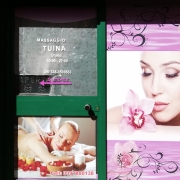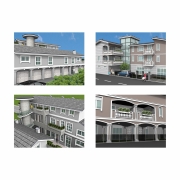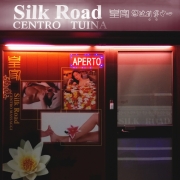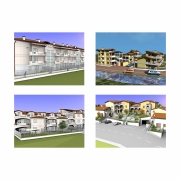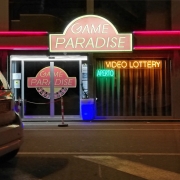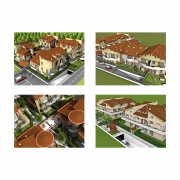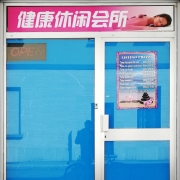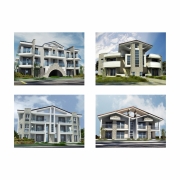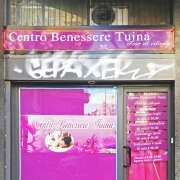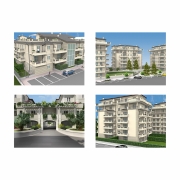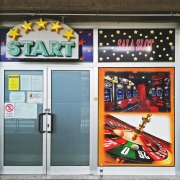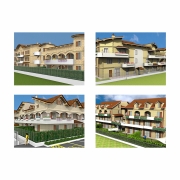Stile (Style): it is configured as a bearer of precise qualities that have a specific meaning in themselves, capable of defining social, moral and economic values, becoming a sign of belonging to a canon, of judgment, taste or manner.
Libero (Free): liberalism, economic theory that supports free initiative and the free market as the sole driving force of the economic system.
Revelation implies a communicative process that brings to the knowledge of most a message hitherto hidden. The existence of a StileLibero™ is a subject being deeply studied, which requires a certain period of sedimentation and fixity in order to recognize itself as such. The research originates in the master’s thesis project in Architecture conducted in 2019 with Andrea Abeni at the Polytechnic of Milan, under the guidance of Prof. Marco Biraghi and Lorenzo Degli Esposti.
It is not possible to elaborate a single theory valid for every possible case, the Style is by its nature Free, but needs to be deciphered according to the features that make it immediately recognizable. Despite its condition of precarious instability and continuous reorganization, StileLibero™ faithfully expresses the nature of a civilization and certain inclinations of the populations. In this sense, the words of Camillo Boito appear very relevant in the personal research of the national stylistic characters, giving us his definition of architectural style:
“Each architectural style therefore has its own structure, which comes from the internal distribution of the building, from the quality of the materials used in the construction, from the static order of the factory, from the natural conditions of the country, to certain principles of science and practice. architectural, – different principles, like everything else, according to centuries and places. Now this really dependent logical framework, more rational than artistic, is the organism. But the organism is not enough to form the style. Architecture does not stop at the office of serving and revealing the distribution and construction: it still intends to beauty, expressing with direct allegories, with abstract analogies, or with the indefinable spirit of art, the use of the building , almost unconsciously representing the nature of civilization, certain states of cultures, certain poetic or prosaic inclinations of peoples, and finally giving shape to the architect’s individual artistic soul. Now these multiple and different offices, more civil, aesthetic, ideal than unscientific, seem to us to be able to indicate with the word symbolism. Who wants a more proper one, look for it. The real beauty comes from the intimacy of the two sides. And the expression also: the two parts therefore form what is called an architectural style” 1
Talking about Style requires a direct comparison with today’s aesthetic manifestations, concrete expressions of the individual and collective values of society. The only way to understand it is to try to describe it, with the awareness that everything within the prefigured area is essential for the construction of a coherent narrative. The study of its symptoms, the systematic knowledge with which it is made explicit, impose methods of investigation and reflection that necessarily confront reality.
The theme of reality is widely addressed by the studies on the contemporary city carried out by Rem Koolhaas; the StileLibero™ is part of a debtor of his assertions that “the best aesthetic definition of the Generic City is freestyle.”2 The free style invoked by the author is perhaps not fully understood for its potential, as it is only announced, not studied in depth and not even supported by the usual trademark that Koolhaas adopts for the terms on which he wants to claim authorship.
Nestled among the many answers of how architecture reacts to the implications of the free market, StileLibero™ is one of these, it is not the only one, but it is certainly among those that best explain its logics. The phenomena of globalization, in themselves, are a theoretical concept that have very little to do with reality; when they occur, they must inevitably interact with the local. If critical regionalism was an approach with which architecture opposed a certain “local” resistance to the generic features of the modern3, StileLibero™ could be its own variation of the contemporary city, or rather degeneration.
The generic city theorized by Koolhaas represents the cradle of StileLibero™; born when it meets the latent identity of the contemporary city. Like a weed in the garden, if neglected, it grows uncontrolled and engulfs everything else. The nature of StileLibero™ is rhizomatic; the timely spread of Chinese massage centres and slot rooms in all contemporary cities is its concrete expression. Free market and degenerate aesthetics: StileLibero™ acts on all the scales in which it reveals itself, from the territorial to the architectural dimension.
To dominate the imagination of StileLibero™ are the individual interests and lifestyles that determine the morphological structure of the territory. Consolidated city and widespread city live on numerous analogies that characterize today’s society, StileLibero™ is one of them; was born in the context of the widespread city but takes root in the same way in other areas. The contemporary city provides for the coexistence of two parallel urban entities that pour into each other; in the liminal zone of intersection between the two systems, StileLibero™ reaches its apotheosis. The mall is its supreme typology: where the greatest economic possibility merges with the degenerate aesthetic, the bond is inextricably welded.
The architectural discipline has generated over the years a vast repertoire of vocabularies; the StileLibero™ draws it casually, constantly mixing them, in order to create an architecture genuinely free. The possibility of drawing from an unknown number of lexical elements makes StileLibero™ always in step with the times; in an era of rapid image consumption, any work produced by architectural culture can be immediately swallowed up by StileLibero™. It does not need to claim a certain stylistic coherence. However, the lexical elements alone do not make a grammar; the StileLibero™ is illiterate, equipped with a slender syntactic structure consists mainly in two modes: symmetrical, to reduce costs, and random approximate.
In full possession of its faculties, StileLibero™ can consciously draw from the cauldron of past history and re-present stylistic elements without having to be tied to any specific trend. Its progress is aimed at building a new imagery capable of containing various aesthetic forms, past and future. While everyone wants to be at the forefront, StileLibero™ does not disdain the past; it is devoid of historiographic judgments and operates differently in all circumstances, adapting to contingencies. Paying particular attention to the multiple ways in which it is configured, it transcends time and place; inserted into the folds of history, it is the bearer of universal values found everywhere.
The StileLibero™ is by its nature democratic; it allows each individual to express himself through the conscious or sub-conscious expression of a language. The cult of contemporary individualism finds ample space in the degenerate aesthetics of StileLibero™. The territory that conceives it originates in the individual will to express themselves and create their own protective shell towards the outside. The StileLibero™ represents a different view of reality, which aims to snatch the subtle and intriguing hidden events. Lifestyles immediately project into the field of aesthetics the latent desires that circulate in the consumer society, prefiguring a multitude of chaotic and tormented identities in constant struggle with each other.
If liberalism is an economic doctrine, StileLibero™ must be counted among its foundations. The current economic infrastructure is declared in many variations, no matter what they are, they all point in the same direction. Free private initiative determines the free market, the only driving force of the economic system. With the emergence of globalization, it gradually deprives itself of the forms of regulation, no impediment must hinder it, aspires to the dogma of perfect competition. In the same way, StileLibero™ also does not bear the norms, which are juridical, aesthetic, moral, if not purely economic ones. Today’s market financialization is accompanied by an alleged dematerialisation of processes; the invisible steps that the goods make, from production to delivery, are hidden from the consumer. The StileLibero™, on the contrary, is resilient to the transformations concerning the digital system; it is still firmly on the ground it belongs to, changing its shape to always remain itself. Systemic crises are elements of liberalism, they appear cyclically to destabilize and restore the precarious balance of the market. The volatility of prices and the intensity of the financial crises permeate every meander of contemporary society, also conditioning the manifestations of StileLibero™. It suffers severe blows from the scarcity of investments in times of crisis but goes back to the top of the wave as soon as the market returns to showing the first signs of recovery. Faith in StileLibero™ is absolute.
Once the StileLibero™ reveals itself in its essence, it is possible to recognize its trends, study its evolutions and oppose the necessary forms of cultural resistance. What remains after having frantically chased the only economic logics is the StileLibero™ in all its purity. In the current historical phase, a time of crisis in the architectural discipline in which no new paradigms arise, StileLibero™ finds full legitimacy for a free and unchallenged action.
“The late style describes a moment, in the evolution of culture, which precedes the transition to a new paradigm, a non-fatal or hopeless moment, but which has inherent a possibility of innovation and transformation.” 4
Defined by Edward W. Said as “Late Style“, it is taken up by Peter Eisenman to suggest how to look at “the specific area of one’s discipline and within its history it can be a way to deal with today”.5
Today’s subordination to the dominant tendencies requires an operation that acts within reality, assuming a position that at least wants to try to propose something different than what a system, in this case of the market, requires.
StileLibero™: Facebook / Instagram
Translated into English by Gabriele Agus.
1 Camillo Boito, Sullo Stile futuro dell’Architettura italiana, in Architettura del Medio Evo in Italia, Milan, 1880, Hoepli; introduzione. p. XI.
2 Rem Koolhaas, Junkspace, Quodlibet, 2006. p. 40.
3 Kenneth Frampton, Storia dell’architettura moderna, Quarta edizione, Zanichelli, 2008. p. 371.
4 Peter Eisenman, Sei punti, Insegnare architettura in Casabella 769. Settembre 2008. pp. 3-5.
5 Ivi.


